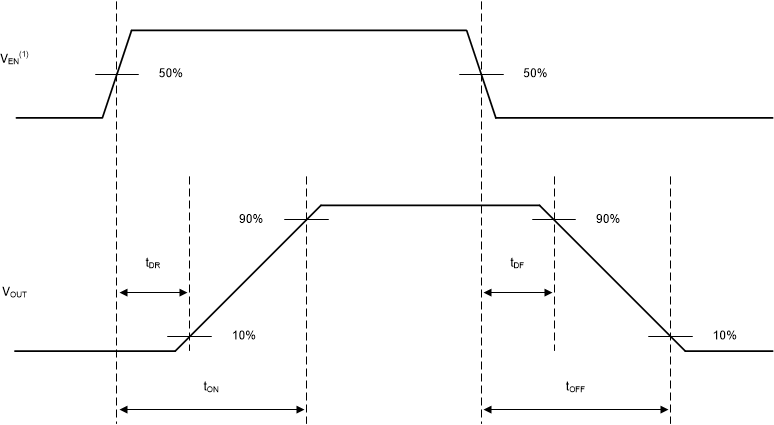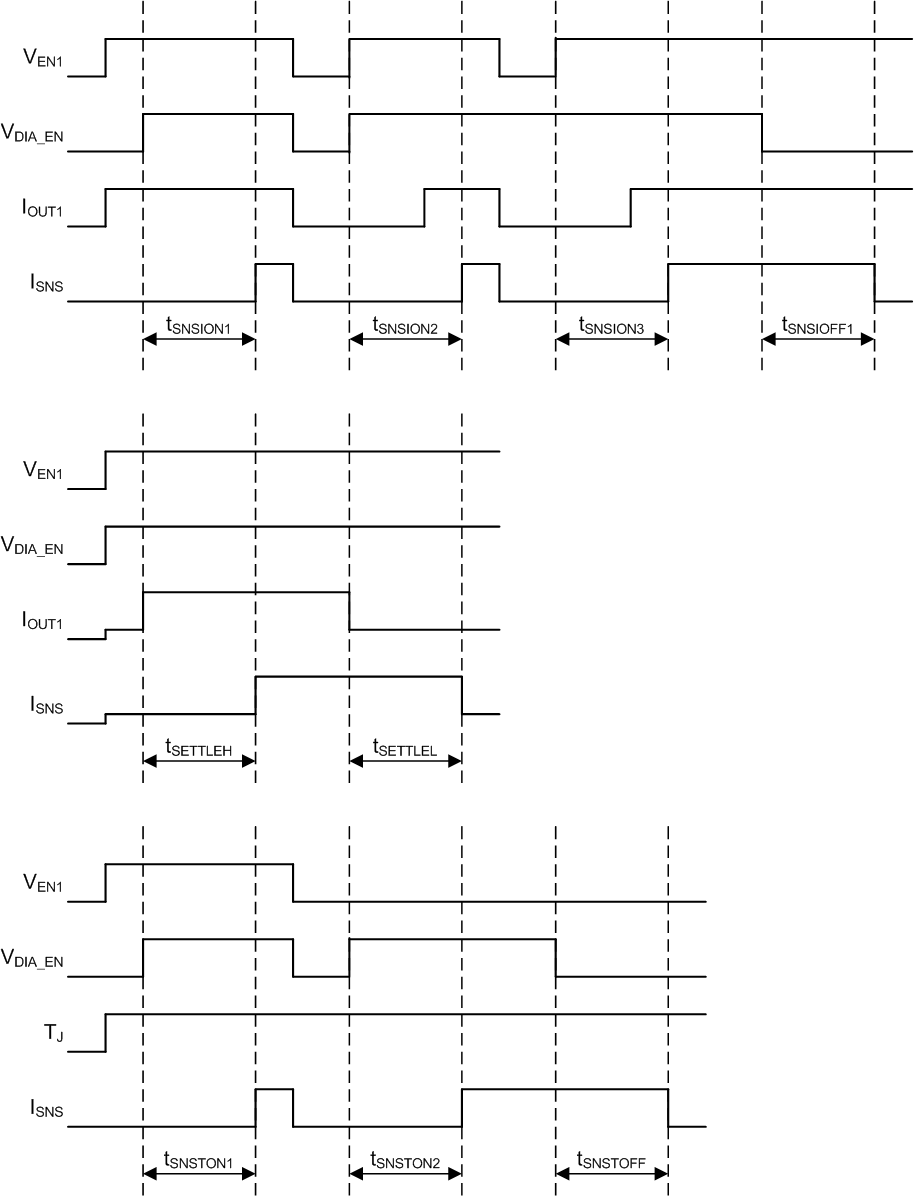JAJSHA8A February 2018 – April 2019 TPS2HB50-Q1
ADVANCE INFORMATION for pre-production products; subject to change without notice.
- 1 特長
- 2 アプリケーション
- 3 概要
- 4 改訂履歴
- 5 Device Comparison Table
- 6 Pin Configuration and Functions
- 7 Specifications
- 8 Parameter Measurement Information
-
9 Detailed Description
- 9.1 Overview
- 9.2 Functional Block Diagram
- 9.3
Feature Description
- 9.3.1 Protection Mechanisms
- 9.3.2 Diagnostic Mechanisms
- 9.4 Device Functional Modes
- 10Application and Implementation
- 11Power Supply Recommendations
- 12Layout
- 13デバイスおよびドキュメントのサポート
- 14メカニカル、パッケージ、および注文情報
Table 9. Switching Characteristics
VBB = 13.5 V, TJ = -40°C to +150°C (unless otherwise noted)| PARAMETER | TEST CONDITIONS | MIN | TYP | MAX | UNIT | |
|---|---|---|---|---|---|---|
| tDR | Turnon delay time | VBB = 13.5 V, RL ≤ 6 Ω, 50% EN rising to 10% VOUT rising | 20 | 60 | 100 | µs |
| tDF | Turnoff delay time | VBB = 13.5 V, RL ≤ 6 Ω, 50% EN falling to 90% VOUT Falling | 20 | 60 | 100 | µs |
| SRR | VOUTx rising slew rate | VBB = 13.5 V, 20% to 80% of VOUT,
RL ≤ 6 Ω |
0.1 | 0.4 | 0.7 | V/µs |
| SRF | VOUTx falling slew rate | VBB = 13.5 V, 80% to 20% of VOUT,
RL ≤ 6 Ω |
0.1 | 0.4 | 0.7 | V/µs |
| tON | Turnon time | VBB = 13.5 V, RL ≤ 6 Ω, 50% EN rising to 80% VOUT rising | 39 | 87 | 145 | µs |
| tOFF | Turnoff time | VBB = 13.5 V, RL ≤ 6 Ω, 50% EN rising to 80% VOUT rising | 39 | 87 | 147 | µs |
| tON - tOFF | Turnon and turnoff matching | 200-µs enable pulse | –50 | 0 | 50 | µs |
| EON | Switching energy losses during turnon | VBB = 13.5 V, RL ≤ 6 Ω | 0.4 | mJ | ||
| EOFF | Switching energy losses during turnoff | VBB = 13.5 V, RL ≤ 6 Ω | 0.4 | mJ | ||

1. Rise and fall time of VENx is 100 ns.
Figure 1. Switching Characteristics Definitions 
NOTE1:
Rise and fall times of control signals are 100 ns. Control signals include: EN1, EN2, DIA_EN, SEL1, SEL2.NOTE2:
SEL1 and SEL2 must be set to the appropriate values.